- Home
- Orhan Pamuk
Istanbul
Istanbul Read online
Acclaim for Orhan Pamuk’s
ISTANBUL
A San Francisco Chronicle, Financial Times,
and Washington Post Book World
Best Book of the Year
“Insightful, eclectic, whimsical.… Pamuk is not writing İstanbul, he is painting it.”
—The Boston Globe
“Brilliantly constructed.… Pamuk has remained faithful to his opulent muse. This quietly instructive and enchanting elegy to a redeemed childhood and to Istanbul itself will bring the world to his feet.”
—The Observer (London)
“Masterful.… A three-pronged book: an anatomy of the city’s body and soul; a compelling account of family politics, war and diplomacy; and a study of the youthful writer’s gropings through the dark towards his true vocation.”
—The Guardian (London)
“İstanbul is equal parts autobiography, travel essay, sociology and criticism.… As evocative as Joyce’s A Portrait of the Artist as a Young Man.”
— The Miami Herald
“Fascinating.… A deeply inward memoir of a city.”
—The Sun
“Essential reading for devoted fans of his novels.”
—The Independent (London)
“Engaging.… A rich and quirkily faceted portrait of a city.”
—Los Angeles Times Book Review
“A fascinating literary adventure.… Rich in details and research.”
—San Francisco Chronicle
“Elegant.… Paints an absorbing portrait of this complex and singular place.”
—Town & Country
“With İstanbul, Orhan Pamuk may have written the most haunting, heartbreaking, gorgeous book ever about a city.”
—The San Diego Union-Tribune
“Entrancing.… Brilliant.… Pamuk will be identified with Istanbul just as Lawrence Durrell is with Alexandria and James Joyce with Dublin.”
—San Jose Mercury News
“İstanbul is full of byways that lead the reader into Pamuk’s fiction—sometimes with a jolting literalness.”
—The New York Times Book Review
“Remarkable.… Even those of us who have never set foot in [Istanbul] will be transformed by reading Pamuk’s extraordinary and moving book.”
—The Financial Times
“Far from a conventional appreciation of the city’s natural and architectural splendors, İstanbul tells of an invisible melancholy and the way it acts on an imaginative young man, aggrieving him but pricking his creativity.”
—The New York Times
“A fascinating read for anyone who has even the slightest acquaintance with this fabled bridge between east and west.”
—The Economist
Orhan Pamuk
İstanbul
Orhan Pamuk’s novel My Name Is Red won the 2003 IMPAC Dublin Literary Award. His work has been translated into more than twenty languages. He lives in Istanbul.
ALSO BY ORHAN PAMUK
Snow
My Name Is Red
The White Castle
The Black Book
The New Life
FIRST VINTAGE INTERNATIONAL EDITION, JULY 2006
Translation copyright © 2004 by Alfred A. Knopf, a division of Random House, Inc.
All rights reserved.
Published in the United States by Vintage Books, a division of Random House, Inc., New York, and in Canada by Random House of Canada Limited, Toronto. Originally published in Turkey as İstanbul Hatiralar ve Şehir by Yapı Kredi Yayınları, İstanbul, in 2003. Copyright © 2003 Yapı Kredi Kültür Sanat Yayıncılık Ticaret ve Sanayi A.Ş. This translation originally published in hardcover in the United States by Alfred A. Knopf, a division of Random House, Inc., New York, in 2005.
Vintage is a registered trademark and Vintage International and colophon are trademarks of Random House, Inc.
The Library of Congress has cataloged the Knopf edition as follows:
Pamuk, Orhan, [date]
Istanbul: memories and the city/Orhan Pamuk;
translated from the Turkish by Maureen Freely.
p. cm.
Originally published as İstanbul: hatiralar ve sehir.
1. Istanbul (Turkey)—Description and travel. I. Title.
DR723.P36 2005
949.61′803′092—dc22 2004061537
eISBN: 978-0-307-38648-9
www.vintagebooks.com
v3.1_r1
To my father, Gündüz Pamuk (1925–2002)
The beauty of a landscape resides in its melancholy.
—Ahmet Rasim
CONTENTS
Cover
About the Author
Other Books by This Author
Title Page
Copyright
Dedication
Epigraph
CHAPTER ONE: Another Orhan
CHAPTER TWO: The Photographs in the Dark Museum House
CHAPTER THREE: “Me”
CHAPTER FOUR: The Destruction of the Pashas’ Mansions: A Sad Tour of the Streets
CHAPTER FIVE: Black and White
CHAPTER SIX: Exploring the Bosphorus
CHAPTER SEVEN: Melling’s Bosphorus Landscapes
CHAPTER EIGHT: My Mother, My Father, and Various Disappearances
CHAPTER NINE: Another House: Cihangir
CHAPTER TEN: Hüzün
CHAPTER ELEVEN: Four Lonely Melancholic Writers
CHAPTER TWELVE: My Grandmother
CHAPTER THIRTEEN: The Joy and Monotony of School
CHAPTER FOURTEEN: Esaelp Gnittips On
CHAPTER FIFTEEN: Ahmet Rasim and Other City Columnists
CHAPTER SIXTEEN: Don’t Walk down the Street with Your Mouth Open
CHAPTER SEVENTEEN: The Pleasures of Painting
CHAPTER EIGHTEEN: Reşat Ekrem Koçu’s Collection of Facts and Curiosities: The Istanbul Encyclopedia
CHAPTER NINETEEN: Conquest or Decline? The Turkification of Constantinople
CHAPTER TWENTY: Religion
CHAPTER TWENTY-ONE: The Rich
CHAPTER TWENTY-TWO: On the Ships That Passed Through the Bosphorus, Famous Fires, Moving House, and Other Disasters
CHAPTER TWENTY-THREE: Nerval in Istanbul: Beyoğlu Walks
CHAPTER TWENTY-FOUR: Gautier’s Melancholic Strolls Through the City
CHAPTER TWENTY-FIVE: Under Western Eyes
CHAPTER TWENTY-SIX: The Melancholy of the Ruins: Tanpinar and Yahya Kemal in the City’s Poor Neighborhoods
CHAPTER TWENTY-SEVEN: The Picturesque and the Outlying Neighborhoods
CHAPTER TWENTY-EIGHT: Painting Istanbul
CHAPTER TWENTY-NINE: Painting and Family Happiness
CHAPTER THIRTY: The Smoke Rising from Ships on the Bosphorus
CHAPTER THIRTY-ONE: Flaubert in Istanbul: East, West, and Syphilis
CHAPTER THIRTY-TWO: Fights with My Older Brother
CHAPTER THIRTY-THREE: A Foreigner in a Foreign School
CHAPTER THIRTY-FOUR: To Be Unhappy Is to Hate Oneself and One’s City
CHAPTER THIRTY-FIVE: First Love
CHAPTER THIRTY-SIX: The Ship on the Golden Horn
CHAPTER THIRTY-SEVEN: A Conversation with My Mother: Patience, Caution, and Art
About the Photographs
CHAPTER ONE
Another Orhan
From a very young age, I suspected there was more to my world than I could see: Somewhere in the streets of Istanbul, in a house resembling ours, there lived another Orhan so much like me that he could pass for my twin, even my double. I can’t remember where I got this idea or how it came to me. It must have emerged from a web of rumors, misunderstandings, illusions, and fears. But in one of my earliest memories, it is already clear how I’ve come to feel about my ghostly other.
When I was fi
ve I was sent to live for a short time in another house. After one of their many stormy separations, my parents arranged to meet in Paris, and it was decided that my older brother and I should remain in Istanbul, though in separate places. My brother would stay in the heart of the family with our grandmother in the Pamuk Apartments, in Nişantaşı, but I would be sent to stay with my aunt in Cihangir. Hanging on the wall in this house—where I was treated with the utmost kindness—was a picture of a small child, and every once in a while my aunt or uncle would point up at him and say with a smile, “Look! That’s you!”
The sweet doe-eyed boy inside the small white frame did look a bit like me, it’s true. He was even wearing the cap I sometimes wore. I knew I was not that boy in the picture (a kitsch representation of a “cute child” that someone had brought back from Europe). And yet I kept asking myself, Is this the Orhan who lives in that other house?
Of course, now I too was living in another house. It was as if I’d had to move here before I could meet my twin, but as I wanted only to return to my real home, I took no pleasure in making his acquaintance. My aunt and uncle’s jovial little game of saying I was the boy in the picture became an unintended taunt, and each time I’d feel my mind unraveling: my ideas about myself and the boy who looked like me, my picture and the picture I resembled, my home and the other house—all would slide about in a confusion that made me long all the more to be at home again, surrounded by my family.
Soon my wish came true. But the ghost of the other Orhan in another house somewhere in Istanbul never left me. Throughout my childhood and well into adolescence, he haunted my thoughts. On winter evenings, walking through the streets of the city, I would gaze into other people’s houses through the pale orange light of home and dream of happy, peaceful families living comfortable lives. Then I would shudder to think that the other Orhan might be living in one of these houses. As I grew older, the ghost became a fantasy and the fantasy a recurrent nightmare. In some dreams I would greet this Orhan—always in another house—with shrieks of horror; in others the two of us would stare each other down in eerie merciless silence. Afterward, wafting in and out of sleep, I would cling ever more fiercely to my pillow, my house, my street, my place in the world. Whenever I was unhappy, I imagined going to the other house, the other life, the place where the other Orhan lived, and in spite of everything I’d half convince myself that I was he and took pleasure in imagining how happy he was, such pleasure that, for a time, I felt no need to go to seek out the other house in that other imagined part of the city.
Here we come to the heart of the matter: I’ve never left Istanbul, never left the houses, streets, and neighborhoods of my childhood. Although I’ve lived in different districts from time to time, fifty years on I find myself back in the Pamuk Apartments, where my first photographs were taken and where my mother first held me in her arms to show me the world. I know this persistence owes something to my imaginary friend, the other Orhan, and to the solace I took from the bond between us. But we live in an age defined by mass migration and creative immigrants, so I am sometimes hard-pressed to explain why I’ve stayed, not only in the same place but in the same building. My mother’s sorrowful voice comes back to me: “Why don’t you go outside for a while? Why don’t you try a change of scene, do some traveling …?”
Conrad, Nabokov, Naipaul—these are writers known for having managed to migrate between languages, cultures, countries, continents, even civilizations. Their imaginations were fed by exile, a nourishment drawn not through roots but through rootlessness. My imagination, however, requires that I stay in the same city, on the same street, in the same house, gazing at the same view. Istanbul’s fate is my fate. I am attached to this city because it has made me who I am.
Gustave Flaubert, who visited Istanbul 102 years before my birth, was struck by the variety of life in its teeming streets; in one of his letters he predicted that in a century’s time it would be the capital of the world. The reverse came true: After the Ottoman Empire collapsed, the world almost forgot that Istanbul existed. The city into which I was born was poorer, shabbier, and more isolated than it had ever been before in its two-thousand-year history. For me it has always been a city of ruins and of end-of-empire melancholy. I’ve spent my life either battling with this melancholy or (like all İstanbullus) making it my own.
At least once in a lifetime, self-reflection leads us to examine the circumstances of our birth. Why were we born in this particular corner of the world, on this particular date? These families into which we were born, these countries and cities to which the lottery of life has assigned us—they expect love from us, and in the end we do love them from the bottom of our hearts; but did we perhaps deserve better? I sometimes think myself unlucky to have been born in an aging and impoverished city buried under the ashes of a ruined empire. But a voice inside me always insists this was really a piece of luck. If it is a matter of wealth, I can certainly count myself fortunate to have been born into an affluent family at a time when the city was at its lowest ebb (though some have ably argued the contrary). Mostly, I am disinclined to complain; I’ve accepted the city into which I was born in the same way that I’ve accepted my body (much as I would have preferred to be more handsome and better built) and my gender (even though I still ask myself, naïvely, whether I might have been better off had I been born a woman). This is my fate, and there’s no sense arguing with it. This book is concerned with fate.
I was born in the middle of the night on June 7, 1952, in a small private hospital in Moda. Its corridors, I’m told, were peaceful that night, and so was the world. Aside from the Strambolini volcano’s having suddenly begun to spew flames and ash two days earlier, relatively little seems to have been happening on our planet. The newspapers were full of small news: a few stories about the Turkish troops fighting in Korea; a few rumors spread by Americans stoking fears that the North Koreans might be preparing to use biological weapons. In the hours before I was born, my mother had been avidly following a local story: Two days earlier, the caretakers and “heroic” residents of the Konya Student Center had seen a man in a terrifying mask trying to enter a house in Langa through the bathroom window; they’d chased him through the streets to a lumberyard, where, after cursing the police, the hardened criminal had committed suicide; a seller of dry goods identified the corpse as a gangster who the year before had entered his shop in broad daylight and robbed him at gunpoint.
When she was reading the latest on this drama, my mother was alone in her room, or so she told me with a mixture of regret and annoyance many years later. After taking her to the hospital, my father had grown restless and, when my mother’s labor failed to progress, he’d gone out to meet with friends. The only person with her in the delivery room was my aunt, who’d managed to climb over the hospital’s garden wall in the middle of the night. When my mother first set eyes on me, she found me thinner and more fragile than my brother had been.
I feel compelled to add or so I’ve been told. In Turkish we have a special tense that allows us to distinguish hearsay from what we’ve seen with our own eyes; when we are relating dreams, fairy tales, or past events we could not have witnessed, we use this tense. It is a useful distinction to make as we “remember” our earliest life experiences, our cradles, our baby carriages, our first steps, all as reported by our parents, stories to which we listen with the same rapt attention we might pay some brilliant tale of some other person. It’s a sensation as sweet as seeing ourselves in our dreams, but we pay a heavy price for it. Once imprinted in our minds, other people’s reports of what we’ve done end up mattering more than what we ourselves remember. And just as we learn about our lives from others, so too do we let others shape our understanding of the city in which we live.
At times when I accept as my own the stories I’ve heard about my city and myself, I’m tempted to say, “Once upon a time I used to paint. I hear I was born in Istanbul, and I understand that I was a somewhat curious child. Then, when I was twenty-two, I
seem to have begun writing novels without knowing why.” I’d have liked to write my entire story this way—as if my life were something that happened to someone else, as if it were a dream in which I felt my voice fading and my will succumbing to enchantment. Beautiful though it is, I find the language of epic unconvincing, for I cannot accept that the myths we tell about our first lives prepare us for the brighter, more authentic second lives that are meant to begin when we awake. Because—for people like me, at least—that second life is none other than the book in your hand. So pay close attention, dear reader. Let me be straight with you, and in return let me ask for your compassion.
CHAPTER TWO
The Photographs in the Dark Museum House
My mother, my father, my older brother, my grandmother, my uncles, and my aunts—we all lived on different floors of the same five-story apartment house. Until the year before I was born, the different branches of the family had (as with so many large Ottoman families) lived together in a stone mansion; in 1951 they rented it out to a private elementary school and built on the empty lot next door the modern structure I would know as home; on the facade, in keeping with the custom of the time, they proudly put up a plaque that said PAMUK APT. We lived on the fourth floor, but I had the run of the entire building from the time I was old enough to climb off my mother’s lap and can recall that on each floor there was at least one piano. When my last bachelor uncle put his newspaper down long enough to get married, and his new wife moved into the first-floor apartment, from which she was to spend the next half century gazing out the window, she brought her piano with her. No one ever played, on this one or any of the others; this may be why they made me feel so sad.

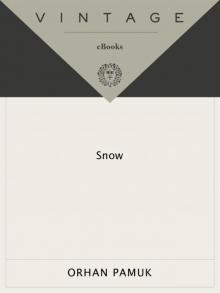 Snow
Snow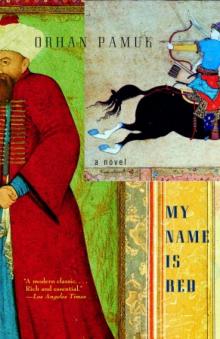 My Name is Red
My Name is Red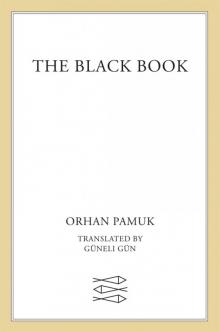 The Black Book
The Black Book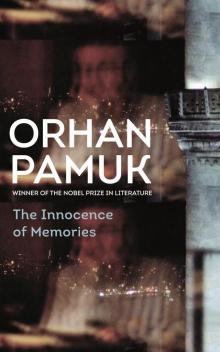 The Innocence of Memories
The Innocence of Memories The White Castle
The White Castle Other Colors
Other Colors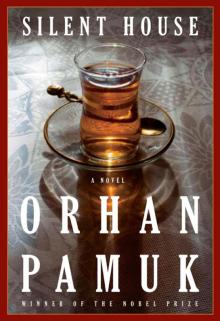 Silent House
Silent House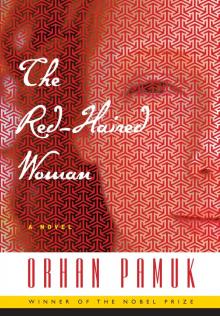 The Red-Haired Woman
The Red-Haired Woman The Museum of Innocence
The Museum of Innocence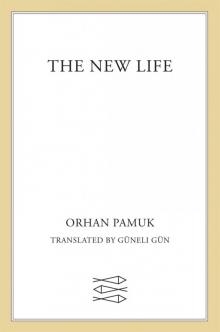 The New Life
The New Life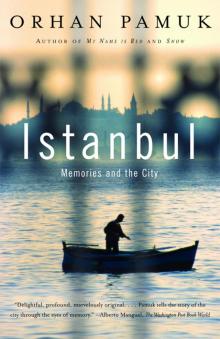 Istanbul
Istanbul